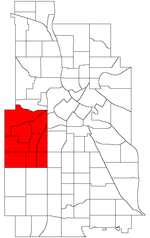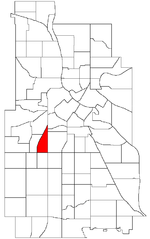Edna S. Purcell House
1913 establishments in MinnesotaHistoric house museums in MinnesotaHouses completed in 1913Houses in MinneapolisHouses on the National Register of Historic Places in Minnesota ... and 4 more
Museums in MinneapolisNational Register of Historic Places in MinneapolisPrairie School architecture in MinnesotaPurcell and Elmslie buildings

The Edna S. Purcell house (now known as the Purcell–Cutts House) was designed by the firm of Purcell, Feick and Elmslie for architect William Purcell and his family in 1913. It is located in Minneapolis, Minnesota. The dwelling is a notable example of Prairie School architecture, featuring a long, narrow floor plan that disregards Victorian concepts about room divisions. It was added to the National Register of Historic Places in 1974. It is now part of the collection of the Minneapolis Institute of Art and has been extensively restored. The museum conducts tours on the second weekend of every month.
Excerpt from the Wikipedia article Edna S. Purcell House (License: CC BY-SA 3.0, Authors, Images).Edna S. Purcell House
Lake Place, Minneapolis Bde Maka Ska - Isles
Geographical coordinates (GPS) Address Nearby Places Show on map
Geographical coordinates (GPS)
| Latitude | Longitude |
|---|---|
| N 44.959336111111 ° | E -93.300480555556 ° |
Address
Lake Place 2324
55405 Minneapolis, Bde Maka Ska - Isles
Minnesota, United States
Open on Google Maps









